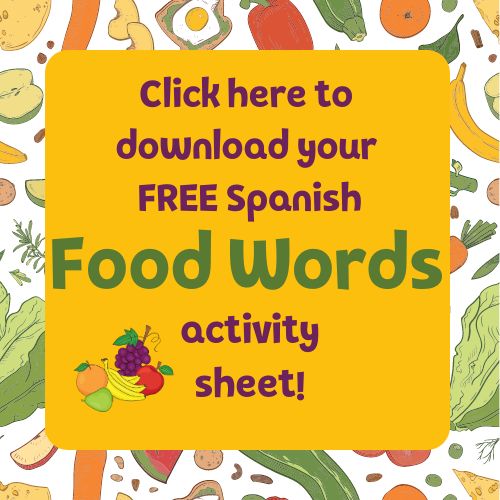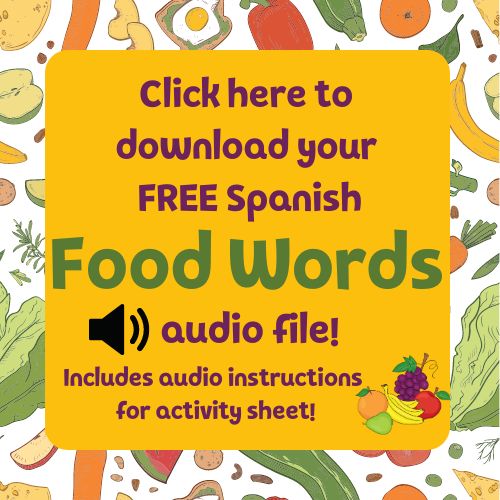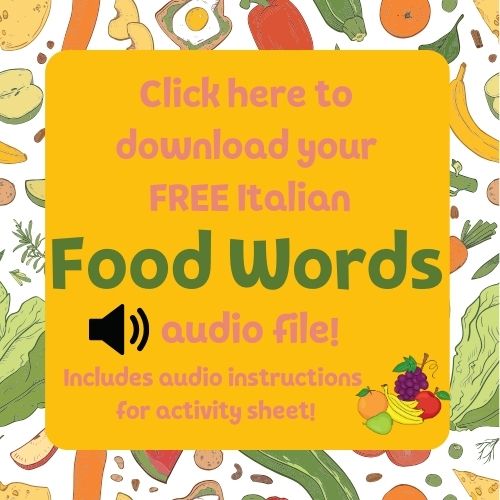
The Importance of Connecting Language Learning to Everyday Experiences
Research has consistently shown that children learn best when new information is connected to their everyday lives and experiences. Real-world learning provides practical context, making lessons more engaging and meaningful. This approach helps children develop a deeper understanding of the subject matter and enhances their ability to retain new information. According to the theory of “funds of knowledge,” which emphasizes the value of students’ cultural and historical experiences, incorporating familiar contexts into learning can significantly improve educational outcomes (Edvigo Academy) (Open Text).
Simple Activities to Reinforce Food Vocabulary at Home
Integrating language learning with everyday activities, such as meal preparation and grocery shopping, can be a highly effective way to teach food vocabulary. We think it would be fun to sprinkle these activities in after reading Little Monster. If you haven’t had a taste of One Third Stories yet, we’ve shared a free food words activity and audio file at the end of this post.Here are some practical and fun activities you can try at home with your children:
1. Meal Planning and Preparation
Involving children in planning and preparing meals is a great way to introduce and reinforce food-related vocabulary. Here are some ideas:
- Cheese and Fruit Plate: Have your child help prepare a simple cheese and fruit plate. As you work together, name each item in the new language. For example, say “cheese” in Spanish is “queso,” and “apple” is “manzana.”
- Egg Sandwiches: Make egg sandwiches and discuss the ingredients in the new language. Use terms like “egg,” “bread,” “butter,” and “cheese.”
- Salad Preparation: Involve your child in making a salad. Name the vegetables and other ingredients in the new language, such as “lettuce,” “tomato,” “cucumber,” and “carrot.”
Role-Playing Games
Role-playing can make language learning interactive and enjoyable:
- Chef and Customer: Set up a pretend restaurant at home. One child can be the chef, and another can be the customer. Create simple menus with food words and images in the new language. The “customer” can order food using the menu, and the “chef” can prepare and serve the pretend dishes.
- Grocery Store Role Play: Create a small grocery store at home using play food or real food items. Children can take turns being the cashier and the shopper, naming the items as they “buy” them.
Grocery Lists and Shopping
Engaging children in grocery shopping can reinforce their food vocabulary:
- Make a List: Before your next trip to the grocery store, involve your child in making a shopping list. They can write or draw pictures of the foods you need to buy in the new language.
- Identify Foods: At the grocery store, ask your child to name the foods you are buying in the new language. This can also be done at a community garden or produce stand, where they can identify fruits and vegetables.
Community Activities
Take advantage of local resources to expand vocabulary:
- Visit a Community Garden: If you have access to a community garden, take your child there and identify different plants, fruits, and vegetables in the new language.
- Produce Stands: At local produce stands, encourage your child to name the items they see.
Additional Vocabulary Practice
Incorporate other aspects of language learning during these activities:
- Colors and Numbers: While discussing food items, review colors and numbers. For example, “three red apples” or “two green peppers.”
- Family Preferences: Discuss what different family members like to eat using the new language. For instance, “Daddy likes bananas” or “Sister loves carrots.”
By integrating language learning with everyday activities, you can create a more engaging and effective learning environment for your child. These activities not only make learning fun but also help children connect new vocabulary to their own lives, improving retention and understanding.



Choose a language
One Third Stories courses are available in French, Spanish, Italian and German.
Select a subscription
Choose between monthly or annual payment options.
Start learning
Receive your first audiobook and Story Box, and let the learning begin!.

Choose a language
Our courses are available in French, Spanish, Italian and German.

Select a subscription
Choose between monthly or annual payment options.

Start learning
Receive your first audiobook and Story Box, and let the learning begin!.








